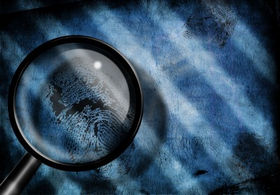Forensic Science For Kids
Fun Forensic Science Experiments for Kids
|
Get FREE Info From Schools |
Teaching forensic science for kids is a great way for children to learn without them knowing. Learn some fun forensic science experiments & activities for kids
A great introduction to forensic science to kids is to show them a few experiments that they can do on their own that directly relate to the crime scene investigation field.
Kids love mysteries and great detective stories. And what's cooler than reading those or watching them on TV?
Being a part of one!
Below, I'll show you a couple of great forensic science experiments for kids that'll keep them entertained while teaching them something cool and new.
Introduction to Forensic Science for Kids
So, what is forensic science anyway?

Finding Fingerprints! |
Forensic science is a term that covers an enormous number of criminal justice employees (from number crunchers, to scientists, to doctors, to great thinkers) that all work together to solve a crime.
Forensic science covers all of these departments and more:
- Fingerprint Analysis
- DNA Profiling
- Firearms (Guns) Study
- Detective Work
- And much, much more
Working together, people in these fields look at, study, compare, and eventually interpret pieces of evidence from a crime scene to find out what happened, where it happened, who it happened to, how it happened, and, if they've done their work well enough, whodunit.
So, let's take a look at some forensic science for kids activities that'll better help you and your children to understand what it's all about.
Forensic Science Experiments for Kids
Here are two great forensic science for kids experiments that will help develop the skills necessary to one day become a great forensic scientist!
Forensic Science Experiments for Kids #1
The Family Room Crime Scene
For this activity, the first thing you want to do is block off the doorways to your family room. No one gets in except for you. Because this is a crime scene!

|
Equipment Needed:
- Plenty of plastic baggies
- A pair of gloves
- Tweezers
- Pen
- Labels
- Magnifying glass
Your job is to go over this room inch by inch to discover just what went on in here.
The clues that you gather will help you to create a story of who did what, when and where.
Pick up anything you may see that will help to tell this story, including:
- Hair fibers
- Half-eaten potato chips
- Discarded trash
- Fingerprints
- Or anything else that may help you develop the plot
Collect all of your evidence in plastic baggies, carefully label them, and set them aside for further investigation in your crime lab (aka, kitchen).
What you find out from the crime scene entirely depends on how closely you look at the details. So be alert!
(Note: The Family Room Crime Scene could just as easily be called The Kitchen Crime Scene or The Bathroom Crime Scene. You can play this game anywhere!)
Forensic Science Experiments for Kids #2
Fingerprint Hunt
One of the most important duties of a forensic scientist is to collect fingerprints at the scene of a crime.
There are two types of prints that may be collected:
- Visible - These are prints that you can actually see with your own eyes.
- Latent - These prints are invisible, caused by sweat or other organic residue on the fingers, but may be lifted with a variety of techniques.
Everyone has different fingerprints, which is why it's important to find them at a crime scene--they can be used to arrest a suspect.
In your house, in your school, at the playground, or anywhere you want, collect all of the fingerprints you can find.
To do this, you'll need:
- Talcum powder
- Cocoa powder
- A soft brush (a makeup brush used to apply blush will work great)
- Clear tape
- Dark colored paper
- Light colored paper
Sprinkle the talc on dark surfaces and the cocoa on light ones, and then use the brush to lightly dust away the powder. What's left will be a fingerprint outlined in powder.
Pick it up with the clear tape, affix the tape to the opposite colored paper, and then make sure to label where you found it and when.
Begin your collection of evidence by playing Fingerprint Hunt today!
|
Get FREE Info From Schools |
Return from Forensic Science For Kids to Forensic Science Careers
Return from Forensic Science For Kids to Criminology Degree





